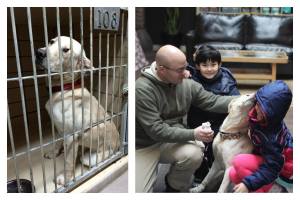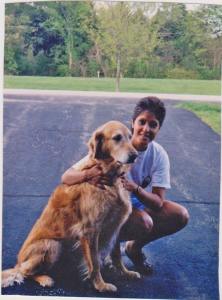As most of our followers know, we supported and reposted the petition for Mayor Emanuel and Chicago City Council to revisit the ordinance to reduce the stray hold period for cats and dogs. We want to explain why we agree with the petition.
Last November we voiced our concerns on our Facebook page about the ordinance being passed by the budget committee. We asked our supporters to contact their aldermen and the Mayor to ask them to table it for public discussion. The next Wednesday our director attended the meeting to voice her concerns during public comments and was dismayed to find out that no public comments were allowed. The resolution was passed with 49 ayes. Alderman Pope moved to reconsider the foregoing vote. Motion was lost.
What could have been done differently?
First of all, the Mayor and the Aldermen could have set aside the ordinance and asked the Commission of Chicago Animal Care and Control (advisory board) to research ways to increase the return-to- owner rates for Chicago Animal Care and Control (CACC).
Here are some ideas that other cities have adopted to increase their return-to-owners rates. (tax dollars being spent wisely)
- Offer a “Free Ride Home Program.” Milwaukee, Kansas City, and Washoe County (NV) have similar programs. Animal Care staff will give a pet one free ride home per year if it is wearing a City pet license. No ticket will be issued for the first time licensed pets run at large. This puts licensing in a positive light showing the benefits of what it can do for an owner and their pet.
- Offer free or low cost ($5.00) microchip clinics. Washoe County, Nevada offered one year of free microchips and saw a 30% increase in their return to owner rates. (Side note: CA based Found Animal Foundation offers $4.95 microchip with free lifetime registration) In a recent study of US animal shelters, 52.2% of stray dogs and 38.5% stray cats with registered microchips were reunited.
- ID Me programs – ASPCA study found shelters that provide engraved ID tags with collars at the time of adoption or redemption show that pet owners will keep the collar w/tags on their pets which provides instant identification.
These are just a few simple suggestions to increase a shelter’s return-to- owner rate. There are many more.
We would like to have these questions answered regarding the reduced stray hold:
- Where was the discussion on how this would affect hundreds of thousands of families and their loved family pets in Chicago?
- What are the safeguards if a family of a dog or cat of “unknown ownership” comes in after the stray hold with proof of ownership? Can they get their dog or cat back? What is the procedure?
- Animal Welfare League (AWL) is the one of three non-city agencies that holds animals for City of Chicago. They do not post photos of found animals. Are the animals held for 3 days at AWL and then transferred to CACC to be held for another 3 days or does the stray hold clock start clicking at AWL.
- Because the new ordinance states “In the event the executive director determines that an animal of unknown ownership suffers from severe behavioral issues, the executive director may allow any disposition, of the animal after three days.” What is the definition of severe behavioral issues? What are the qualifications of the person who is determining these behavioral issues?
- Finally, where was the public campaign to explain this ordinance to citizens who considered their pets loved family members?
Many lost pets go unclaimed because it is virtually impossible for the average citizen to figure out the “system” in Chicago and Cook County. The owners are looking, but not in the right place, they don’t know where to look and the shelters make the false assumption that the animal is a “stray” or has been “dumped”. Factor in that a large percentage of the urban population speak limited English, have limited finances, transportation and computer access. They may work two jobs or shift work, and cannot visit the stray holding facility during normal business hours. This makes it difficult for people to claim their animals. The reduced stray hold exacerbates the problem.
Again, we are asking that you continue to sign and share the petition. Please send in your questions and comments to your aldermen and the Mayor. Thank you for your support and taking the time to read our blog.
rahm.emanuel@cityofchicago.org Mayor
@ChicagosMayor Twitter
susana.mendoza@cityofchicago.org City Clerk




